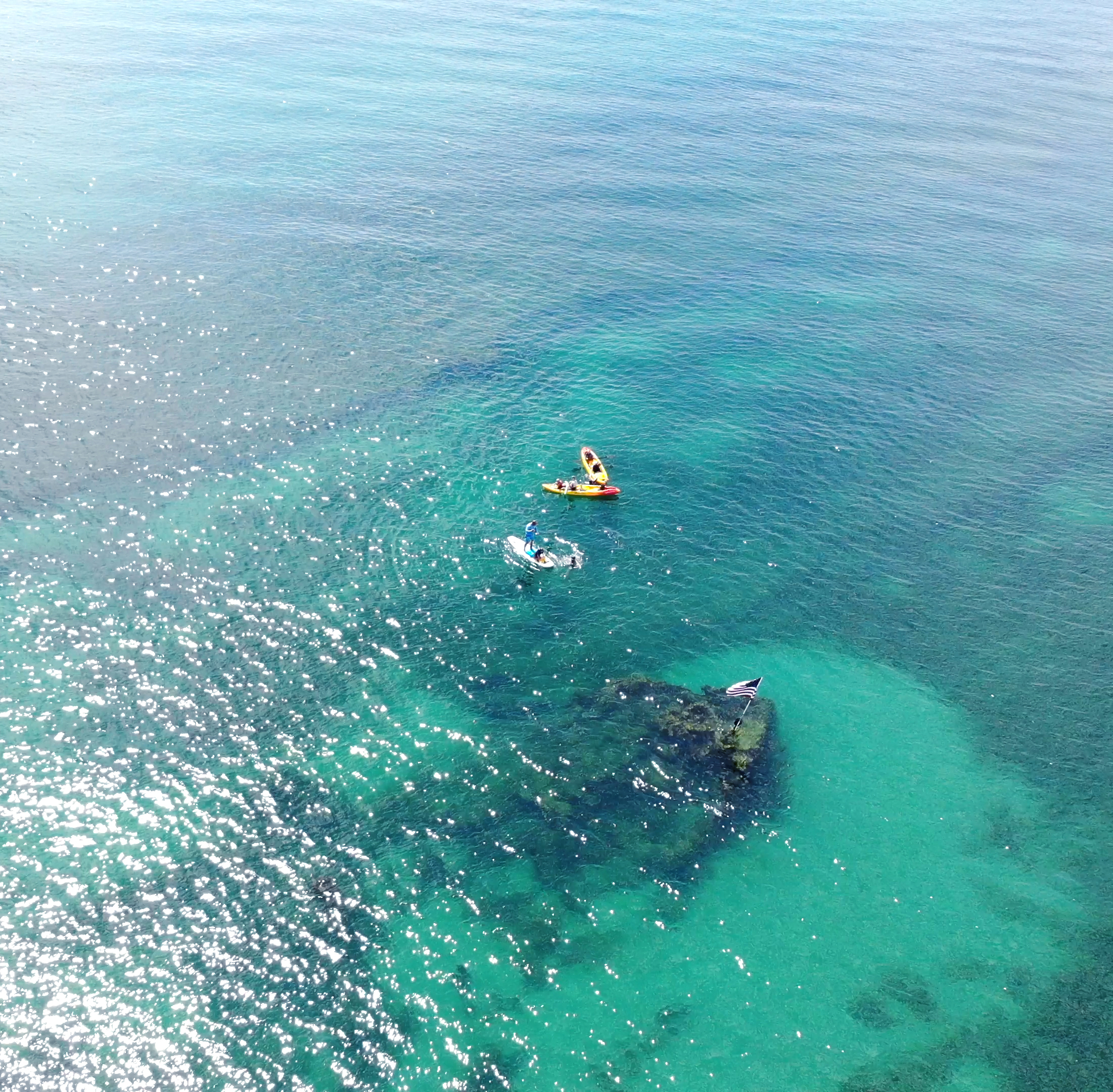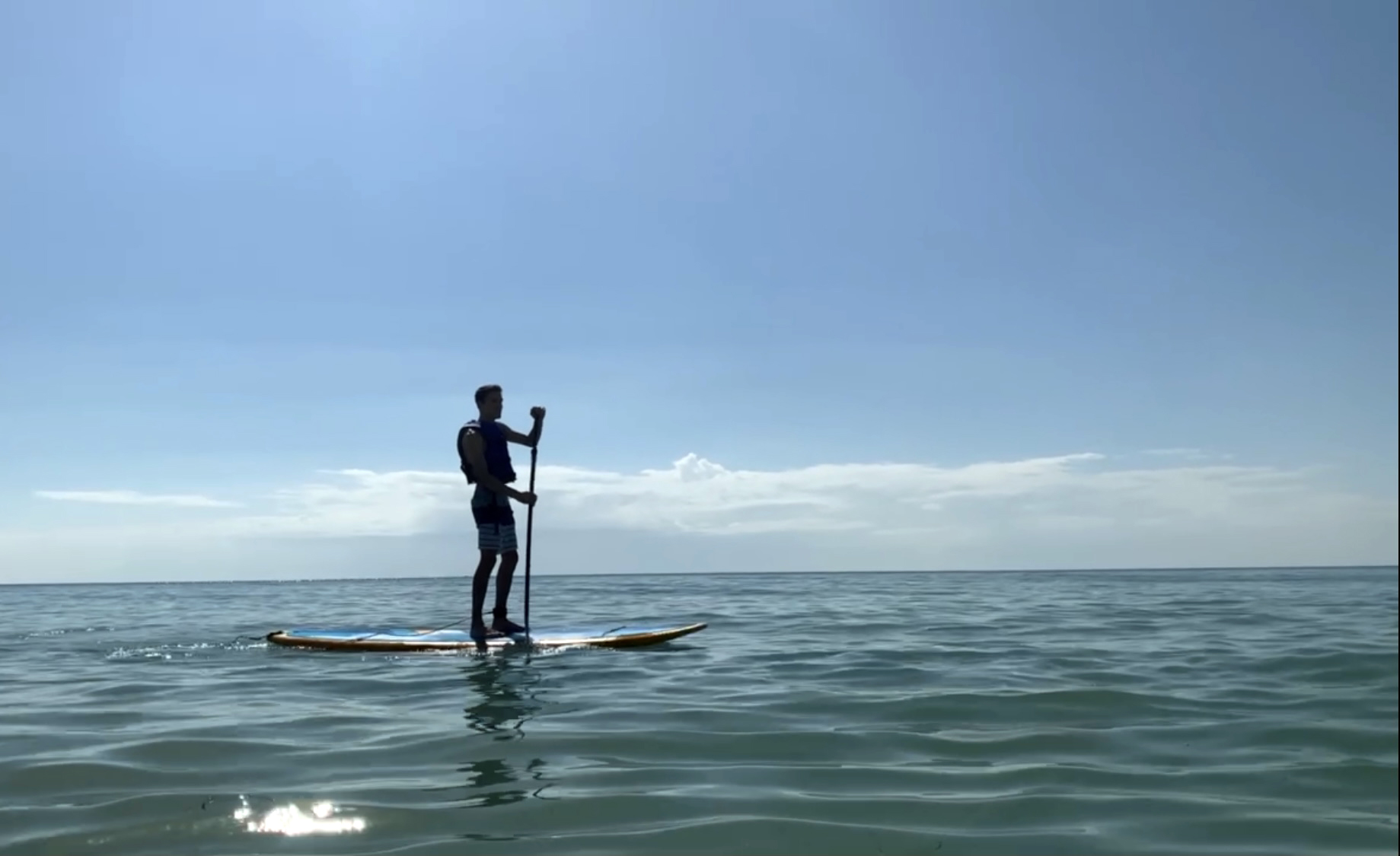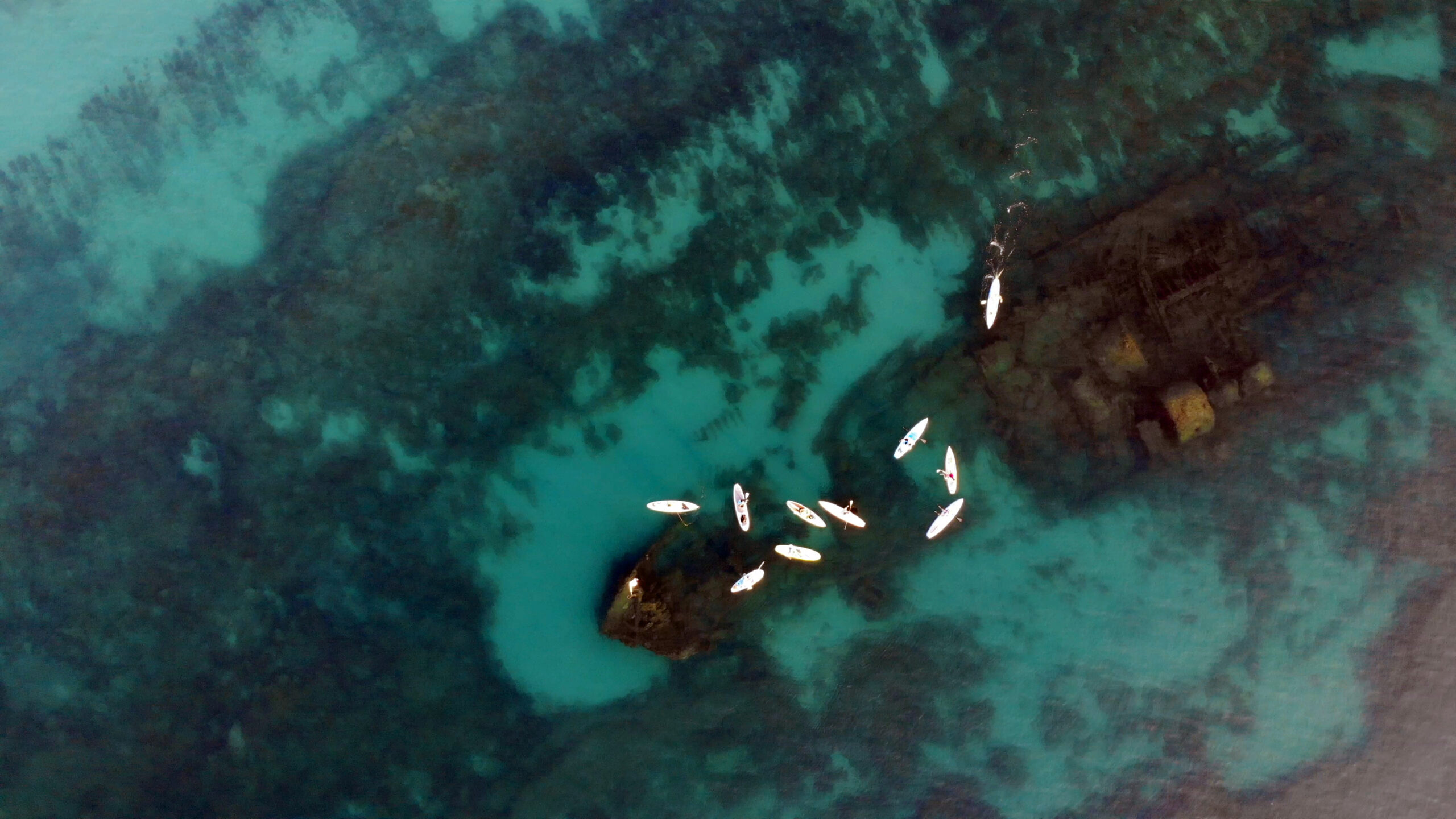
THE STORY BEHIND THE MOST ICONIC SNORKELING DESTINATION IN VERO BEACH
For most of the year, those standing on the beach just beyond Sexton Plaza can see a mysterious flag that appears to manifest from the ocean itself. The flag, put in place each 4th of July by Vero Beach residents, marks a significant piece of local history: an ill-fated 19th-century vessel, now teeming with marine life just a quarter mile from shore.
THE SS BRECONSHIRE
Named after a historical county in Wales, the SS Breconshire was an iron-hulled, schooner-rigged steamer ship built in Sunderland, England in 1833, or 1883, or 1884, depending on who you ask.
Some reports suggest that the ship was originally named SS Numida and owned by a company called Porteous & Senier until it was purchased in 1886 by Jenkins & Co, a company based out of London. While owned by Jenkins & Co, the vessel and its crew typically ran routes from England to the Mediterranean and New York, picking up and delivering cargo.
Though the date the ship was built and its early history remain somewhat of a mystery, all accounts agree that the fateful day it sank along the coast of what is now Vero Beach was April 30th, 1894.

THE FINAL VOYAGE
The SS Breconshire and its crew were in New York and ready to return to England when Captain Robert Taylor received the order to pick up cargo in Tampa, Florida. Unfamiliar with the route, he ordered navigational charts of Florida’s coasts to ensure an uncomplicated voyage.
Captain Taylor and the 24 crew members under his command, including Second Officer Edwin Curling, received the package of charts and started heading south along the east coast of the US on April 25th, 1894. The trip went smoothly at first, and it wasn’t until three days into the voyage that they checked the package and discovered they were missing charts for a 20 mile stretch of coast, just south of Cape Canaveral.
Despite the missing charts, they continued their journey along the Florida coast. On the night of April 29th, 1894, the water was calm and clear, and Captain Taylor retired to his cabin to rest, leaving Second Officer Curling in charge until the morning.
Around midnight, the crew on the lookout reported seeing a “dark streak” in the water, which could signal land, but they attributed it to a change in weather conditions and stayed the course set by Captain Taylor.
Shortly after, the Breconshire reached the “dark streak” and collided with one of the four limestone and worm rock reefs located along the coast of Vero Beach. The impact damaged the ship’s hull, and the vessel began to fill with water, sinking 20 feet to the ocean floor below.
Luckily, the entire crew was able to escape the nearshore wreck on lifeboats. After a few days of recuperating at a nearby coast guard station, they returned home to England, where the trouble was over for all except Captain Taylor and Second Officer Curling.
Taylor and Curling faced trial in London, and Her Majesty’s Justice of the Peace found both men responsible for the negligence that resulted in the destruction of the expensive vessel. Their certificates were suspended for six months as punishment for the $75,000 loss, which would be equivalent to 2.5 million dollars today.

THE BOILER WRECK
Up until the early 2000s, the boiler of the SS Breconshire could still be seen poking out of the water and visible from shore, earning it the title of the “Boiler Wreck” among locals.
Sadly, over a century of resting on the ocean floor has taken its toll. The ship has settled further into the sand, eroded by saltwater and waves, and the telltale boiler of its local namesake now lies hidden below the surface.
However, much of the 300ft vessel is still protruding from the ocean floor, covered in algae and serving as a habitat for hundreds of marine species, like an extension of the reef that sank it.
Sea turtles swim lazily over the top of the SS Breconshire, munching on the greenery before heading to their nesting locations at the beach. Snook and snapper pass by the masts while they consider a trip to the Indian River Lagoon, and weary stingrays stop by to rest in the security of the aquatic plants growing beside the wreck.
The hull and girders of the vessel, partially buried in the sand, offer plenty of hiding space for tropical species like elegant angelfish, colorful blue headed wrasse, and striped sergeant major fish, who prefer to be out and about without being too exposed.
Inner parts of the ship offer daytime shelter for lobsters, who are most comfortable venturing out to hunt in the cover of night, and moray eels find the SS Breconshire’s nooks and crannies to be suitable dens while they lie in wait for their next unsuspecting meal.
Due to the impressive array of marine wildlife and its close proximity to the shore, the Boiler Wreck is a popular summer snorkeling and diving destination. From May until August, west winds clear the water and unveil the wreck for adventurous residents and visitors alike.
During these months, Paddles By The Sea and Vero Tackle & Watersports team up to offer paddle board and kayak rentals to get you to the Boiler Wreck. Being in 10′ of water, most of the wreck is visible from the surface. Unfortunetly, we are unable to offer snorkel tours at this time.
Author: Lauren Hamers
